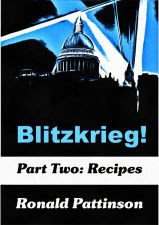I rise at 8:40 and go straight for breakfast.
It's the same as yesterday: fried egg, bacon, orange juice and coffee. Followed by fruit. Everything I need in the morning.
There aren’t that many other festival-goers in the breakfast room. They’re probably breakfasting later.
Back in my room, I have a bit of a lie down. Before fiddling on the internet a bit. And making myself some cheese and salami sandwiches to eat at the festival. I saw the price of the food they’re selling there. I’d never be able to look Dolores in the eye again if I paid that much for nosh.
The festival starts at noon today. I set off a little after that and roll up about half an hour after that.
It’s still pretty quiet when I arrive. Am I here too early? I may as well get stuck into some beers. Starting with stands I didn’t visit yesterday.
I begin with several of the local “Raw Ales”. Ones brewed the way I saw yesterday, where the wort isn’t boiled. When they use hops – which isn’t always the case – they either make a hop tea separately or run the wort off over a bag of hops (as I saw yesterday).
They’re stronger than I expected. Mostly in the range of 6% - 8% ABV. (Though I suspect there’s only a vague estimate of strength, given the way many brew.). With loads of juniper flavour, as the mash water is first boiled with juniper. The quality is, well, variable. The best are surprisingly light and refreshing.
A brewer explains why not boiling isn’t as infection-prone as you might think. Because kveik is pitched so warm – 30º to 40º C – there’s very little time spent cooling the wort. Whereas a boiled worts needs a couple of hours to cool down enough to pitch, leaving more time that it can be infected. It sort of makes sense.
I find another Imperial Stout, Svart Hav from Arve Sundnes. A relatively light 15% ABV. It’s another winner. Is it just my personal preference coming out that I love the Imperial Stouts?
I wander by Thor’s stand again. I do like his beers.
“I had a look at your blog. Your books are exactly what I’ve been looking for.”
That’s good to hear.
Not all the traditional beers are raw. In some places they do boil. And really boil, for five or six hours. Even though these are also brewed from 100% pilsner malt they’re much darker. Around the colour of an English Bitter. And quite different to the unboiled beers.
Christina told me about a brewer with a Pliny the Elder clone that sounds interesting. He has three beers and I kick off with the lightest, a pseudo-Pilsner, brewed with kweik. It’s rather nice.
I try the Pliny clone next. Not sure it’s an exact clone. It’s pretty good, though. Packed full of hop flavour. The brewer tells me that he uses a ridiculous quantity of hops to make it. I can believe him.
A few brewers I speak to grow their own hops. None are sure exactly what variety they grow. As often the hops have been there since before their grandfather’s time. Not sure if homegrown hops are enough for all their needs.
For those buying hops, German and Czech types seem the most popular. With the more adventurous plumping for American varietiess.
Finally, it’s the turn of an Imperial Stout aged three months in an oak barrel, Outstanding stuff. Powerful and complex, while still being very drinkable. A really dangerous beer.
I have a chat with Lars. About historical research and the current state of farmhouse beer across Europe. He’s doing really important research into a very much neglected topic. And putting a lot of time and effort into it. It’s very much to be applauded.
Another farmhouse style is smoked. And I mean smoked. The brewers smoke their own malt and use 100% of it in their brews. Not for the faint-hearted. These beers make Schlenkerla seem restrained and subtle.
I often say that there’s almost nothing genuinely new in beer. That pretty much every “innovation” has, at some time and in some place been done before. But here I found something totally new to me: beer brewed with cheese mould.
I get talking to the brewer, a charming 87-year-old man. Who tells me that the taste reminds him of his childhood, when he would surreptitiously drink his father’s beer.
What of the beer? It’s not as weird as it sounds. While still having a pretty distinctive flavour, which I find hard to describe. Definitely drinkable.
I bump into Matt and we get talking about invert sugar. Which he makes commercially.
“I mostly sell to homebrew stores. Sometimes to brewers.” He tells me. “I sent a sample to one brewer who makes a lot of British styles. Do you know what he said?”
“What?”
“British brewers don’t use sugar.”
“Where the fuck did he get that idea?”
“Beats me.”
“A good case of being confidently incorrect.”
We visit Brølsch Brewery’s stall. Who has an 8% beer. And whale meat snacks.
“Are you going to try the whale, Ron?” Matt asks.
“No.”
“It’s very smooth. Almost like pâté.”
“Still not tempting me.”
Having been told that his beers are good, I wander across to the captain’s (Andre Kragset) stall. I’ll call it that because the brewer is wearing a full captain’s uniform. And the stall is like the front of a boat. He even has an engine noise playing in the background.
His beers are, indeed, rather good. And, to accompany them, he has pancakes. With loads of butter and sugar. Apparently, this is what you eat on Norwegian ferries. Which is the experience he’s trying to replicate.
He’s another brewer who’s very interested in British styles. In his case, ESB in particular. I mention that I have lots of Fuller’s brewing records.
“Could you send me an ESB recipe?”
“Sure.” I give him my card.
At 7 PM Christina is talking. About Vikings in Ireland and their use of beer. It’s all new to me, being well before the earliest period I’m comfortable with. Fascinating, if, at times, rather brutal.
When it’s done, the homebrew part of the festival is about to close. I decide to call it a day. I’m not so interested in the commercial part. I’ll have to start paying for beer, too. And I’m feeling knacked, having been here over seven hours.
I finish off my duty-free whisky as I watch some YouTube. Sleeping isn’t a struggle.
















































































5 comments:
As far as your recipes from Fullers I've taken a stab at this one:
https://barclayperkins.blogspot.com/2010/06/lets-brew-wednesday-fullers-obe.html
Not an ESB and I probably didn't come all that close to how it really was, but it was still a really nice one in its own way.
It was Ireland where brewing sugars were not as popular.
Oscar
Is the beer festival you visited a regular event or a one off?
It's an annual event.
Thanks
Post a Comment